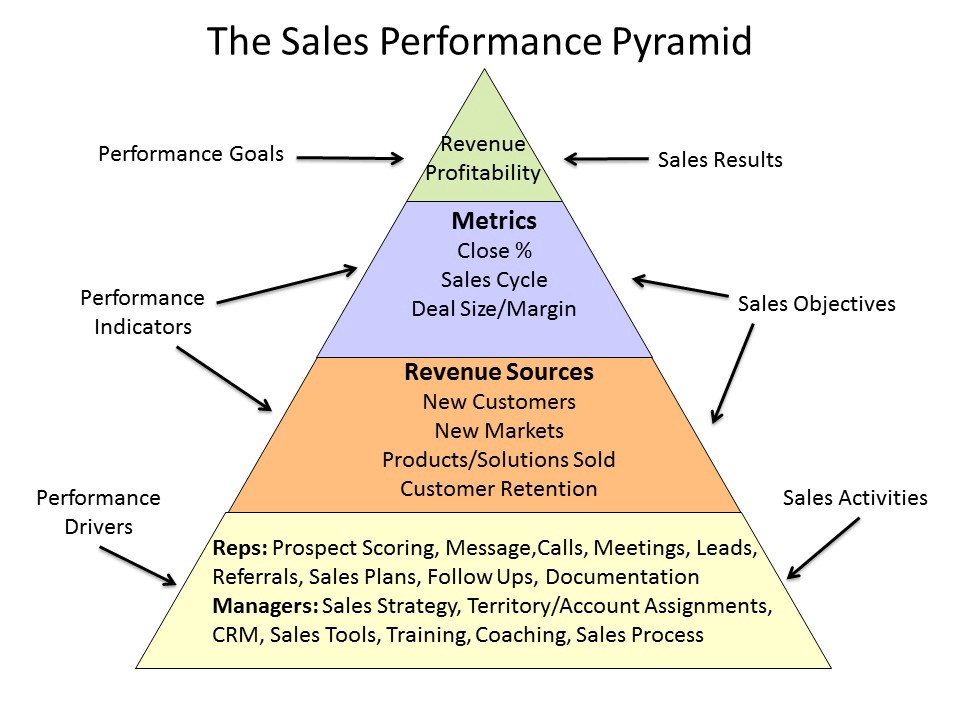
Are your sales reps performing at their peak? Do you have a team of highly motivated and highly invested reps who put in the work day in and day out?
A sales manager’s biggest challenge is making sure that all sales reps are performing at optimum level. It’s a tough ask, but for sales organizations to generate their target revenue, sales reps need to deliver.
Sales managers must know how to properly evaluate their reps and identify the top performers and the ones who need more training or coaching—or possibly get the boot.
So as a sales manager, how do you evaluate your reps? You need to be fair, for one, and the only way to do that is to set certain measures and standards. You also need to evaluate with the (clear) objective in mind. You need to establish what needs to be done, what needs to be accomplished.
While different companies may use different methods for evaluation, here are some general tips to keep in mind when evaluating a sales rep's performance:
1. Set Key Performance Indicators and Goals
Your KPIs (Key Performance Indicators) can help measure how well—or badly—you and your sales reps are doing. Results of the KPIs can also help indicate which parts of the process need more focus, which reps need more training, which areas need more sales enablement tools, and so on.
KPIs may vary per organization, again, depending on your business model and goals. That said, revenue generated should not be your only KPI. (We’ll discuss this further in the points below.)
Try not to overwhelm the evaluation process with too many KPIs. Too much data tracking may just make performance evaluation too confusing or taxing. Don’t just focus on results. Activity KPIs, which evaluate performance of actions "in process," are also useful. This way, you can make sure that sales reps perform well every step of the sales process. (More on “in-process” KPIs below.)
Setting KPIs also means setting goals. These quantifiable measures will show you if you are on track to meeting business and team goals. So as with goals, KPIs should be SMART (Specific, Measurable, Achievable, Realistic, and Time-Specific).
2. Evaluate the Process As Well
Your sales reps have quotas and, yes, they need to hit those. But you should also track and evaluate the activities that help hit those targets. While you are supposed to evaluate reps on whether they meet these quotas or not, you should also assess how they go about trying to hit targets.
These are the “in-process” KPIs or activity metrics, and your sales pipeline will tell you which activities to track—from generating leads and prospecting to negotiating and closing deals. This allows you to identify strengths and weaknesses among members, and train them to get better at their weak points.
Identify what makes most sense to your company. If you do mostly inside sales, that may mean evaluating reps on the number of cold calls made a week or month, the conversion rate of those cold calls, speed of response, successful lead qualification, number of proposals sent, and the like. But don't forget to also look at their soft skills: persistence, drive, leadership, communication skills, and the like.
Here is a sample of a sales performance pyramid. The end goals are at the top. At the bottom are the sales activities or “performance drivers.” They almost serve as the foundation for the pyramid. It’s like saying that this pyramid won’t be complete without these activities, and you can’t reach the top (“end goals”) if you don’t perform them well.

(source)
Monitor your pipeline. This will tell you a lot about how your reps are performing. Your CRM should give you full pipeline visibility and make it easier for you to track the performance of each sales rep for each activity.
3. Enforce a systematic schedule
Having a clear schedule for reviews is a must. Most sales companies perform quarterly assessments. But do note that managers can assess a situation or a sales rep whenever they feel the need to, and these assessments don’t have to be a formal procedure.
Weekly one-on-ones or group huddles is good, especially for sales teams that move at a fast pace. This allows you to troubleshoot at any given time, and find solutions in sync with your sales pace.
4. Listen / Sit In
Listening in on calls, joining them in presentations, sitting in on meetings they’re conducting—these scenarios help you observe your sales reps in action. And there is no better way of checking how they perform than that.
It’s also one of the best ways to train your sales reps. So your post-observation feedback is very critical to your rep’s development.
Prioritizing performance evaluations shows that you are committed to creating a culture of learning within your organization. After all, these evaluations aim to help sales reps improve or do better than their last performance. It also creates a culture of responsibility and accountability. Sales reps are taught that every action has a consequence and that they can be rewarded for the good, but also admonished for the bad.
Photo from Pexels





